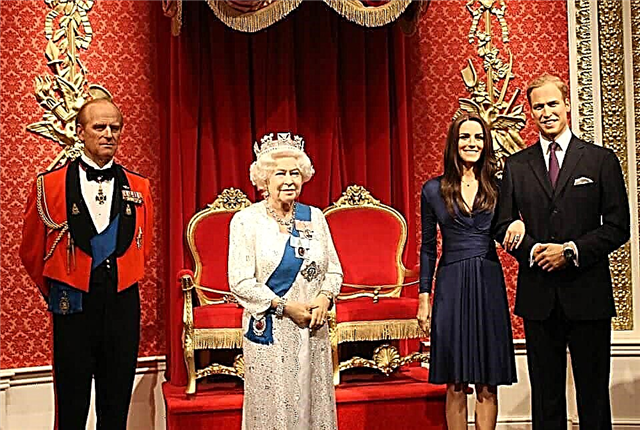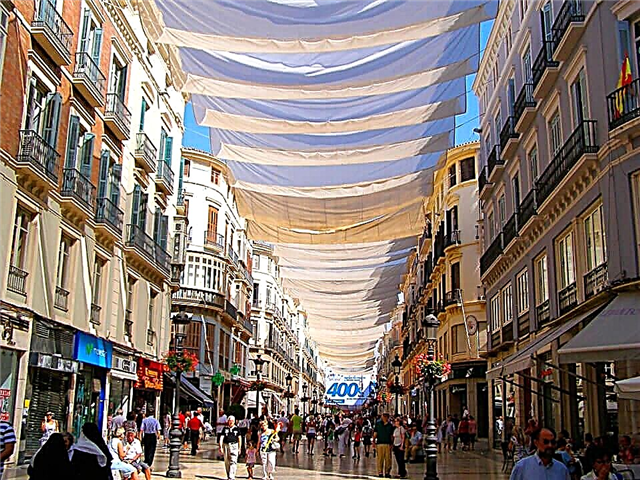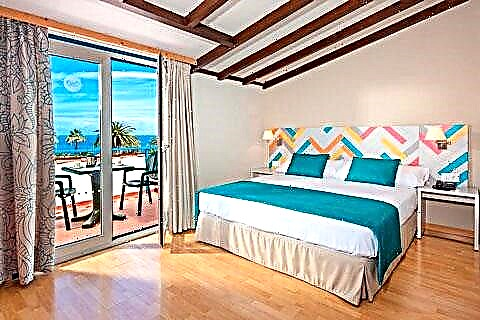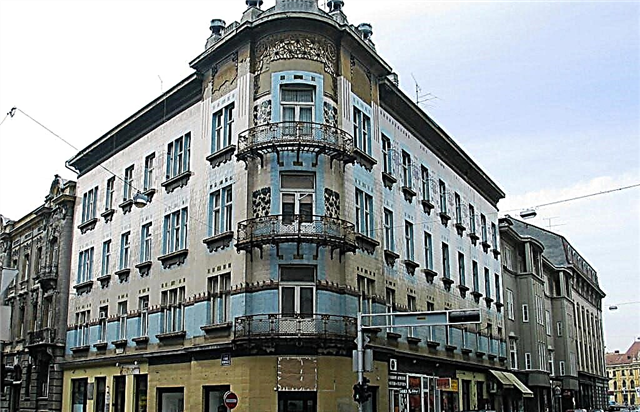Walking along the quiet and beautiful streets of this cozy European city, you can trace the history of its life. Each street is magnificent buildings, works of art. The museums, of which there are a huge number, do not make the city lifeless. Everything here is harmonious and charming. This is the city where you want to stay.
900 years of history

Zagreb became the capital of Croatia in the middle of the 16th century, and the first records about it appeared in 1094. Then the Hungarian king Laszlo I established a bishopric in a settlement on the Kaptol hill. Nearby was the settlement of Hradec. It became the city of Hradec in 1242. At the same time, the construction of the city wall and the construction of the tower began, where a bell hung, informing the townspeople about the closing of the city gates. At the beginning of the 17th century, Hradec and Kaptol merged into one city, which was named Zagreb. The history of the name is ambiguous. Many historians are inclined to the version according to which the old Croatian word “zagreb”, meaning fortification, gave the name to the city.
As a city with a long history, Zagreb boasts an abundance of buildings, each of which is one of a kind. Zagreb is sometimes called the city of museums. They are here almost at every turn. For tourists, time and opportunities still have their own limits, so it is necessary to highlight at least 10 of the best, of which everyone will choose to their taste.
Tower with a fortress wall

The most epochal building of the city is the tower with the remains of the fortress wall. Its age is about 800 years. The stone gate was built at the same time. There is a small chapel with the icon of the Mother of God protecting the city from adversity. Citizens often come here to pray and thank for their city, in which they really want to live. The height of the tower is about 30 meters. If you need to take a beautiful panoramic photo, then you will not find a better place. You can see almost the entire city from here. Every day at noon, the cannon in the tower fires a shot that has become an integral part of city life over the centuries. The clock is checked on it.
Cathedral of the Assumption of the Virgin Mary and Saints Stephen and Vladislav

The next most important for the city is its symbol, which flaunts on the national currency. This is the Cathedral of the Assumption of the Virgin Mary and Saints Stephen and Vladislav. This temple was born as a dedication to St. Stepan, in 1175. Until now, it has been rebuilt several times. The final height of the building is 105 meters. Thanks to the light stone and carved decorations, the temple seems to be floating in the air from afar. But close up, a person is lost next to these impressive dimensions. Going inside, get ready for the atmosphere of this place.
The sarcophagus with the relics of Cardinal Aloisie Stepinats is rightfully recognized as the main shrine here. Sunlight entering the building through multi-colored stained-glass windows gives the whole environment a mysterious look. Unobtrusive moldings and numerous sculptures adorn the cathedral, making it more of a museum than an ordinary prayer temple.
Croatian National Theater

Another building can be admired in any weather. Depending on the lighting, it can be austere, solemn or romantic. We are talking about the Croatian National Theater, which can be safely called a work of architectural art. It was built in 1895 and is located on Marshal Tito's square.
The theater looks organically from all sides, surrounded by neat flower beds and lawns. Its yellow color turns golden on a sunny day, and it seems to glow all over. And the evening illumination gives it solemnity and mystery. It seems that the ticket will turn into a fan or an elegant hat, and you will enter inside as a different person, ready to contemplate this beauty not only outside, but also inside. And there is something to see here. Antique boxes, comfortable chairs. Everything is in velvet. The curtain is decorated with an illustration from the opera. In anticipation of the start of the theatrical performance, the setting creates the most suitable atmosphere.
Zagreb's architecture is like a necklace of fine buildings, alternating between temples with their holy walls and more secular buildings designed for museums, theaters or exhibitions.
St. Mark's Church

Temples adorn this city, as do other architectural forms. The Church of St. Mark is ordinary only at first glance. Its roof is worth paying attention to. It is made of tiles of different colors. The result is a mosaic. Incredible, but true. And all the elements were added to the coats of arms of Croatia, Slavonia, Dalmatia and Zagreb. This project took place in the 19th century.
Callin's house

Continuing your city tour, be sure to look at the Kallin House, located at the corner of Masarykov and Gundulichev streets. It was built at the beginning of the 20th century for a ceramic tile industrialist and served as a kind of advertisement, as the walls of this building are completely covered with top-class ceramics. Openwork balconies give it elegance.
Strossmeier Gallery

Zagreb is not only the political capital of Croatia. It is also a cultural center, which brings together many theaters, museums, galleries and exhibitions. One of them is the Strossmeier Gallery or, as it is also called, the Old Masters Gallery. It was founded in 1884 at the expense of Bishop Strossmayer. This temple of fine arts has collected about 4,000 works. Among them are works by Dürer, El Greco, Goya. In front of the gallery there is a monument to the creator and inspirer.
Mimara Art Gallery

Another example of the cultural significance of Zagreb is the Mimara Art Gallery. Ante Topić Mimar, born in Zagreb but living in Austria, has collected paintings and objects from all over the world all his life. At the end of his life he gave it all to his hometown. For this priceless gift, a museum was even opened in the building of a former gymnasium, built in the 19th century. Its value lies in unique canvases, of which there are about 3,700 copies. The works of the Flemings, Bosch, Rubens are exhibited here. Connoisseurs of this type of art can spend the whole day within the walls of the museum.
Park Maksimir

Happy but tired tourists will be happy to relax in Maksimir Park, where the townspeople like to spend their free time. This delightful place will make you forget about fatigue under the murmur of water and rustle of leaves. The park is simply drowned in the greenery of numerous plants. This piece of landscape art was created in 1794 and named after Bishop Maximilian Vrhovec, who was the main inspirer of its creation. There are many lakes on the banks of which you can just sit on the grass. At the end of the 19th century, the park was supplemented by the Botanical Garden, which has tens of thousands of plants in its collection. Maksimir is recognized as a monument of park architecture.
Zagreb zoo

Speaking about this corner of Zagreb, one cannot but mention the Zagreb Zoo, located in the park. Along with the animals that we have ever seen, strange animals such as the pygmy hippo, the beautiful and proud snow leopard, the graceful and graceful Saharan oryx walk in spacious enclosures. The entire team of the zoo participates in a program to preserve rare species of animals, birds, and reptiles on the planet. This kingdom is spread over an area of about five hectares.
Cemetery Mirogoy
Each city is beautiful not only for museums and theaters. The memory of people who are always living, but not with us, deserves to be respected. In Zagreb, they know how to respect the memory of people who have passed away. Mirogoy Cemetery is not just a resting place. Everything is beautiful here - from the entrance and walls, immersed in greenery, to monuments at burial sites.
The entrance, with its ivy-covered columns, does not in any way indicate that this is a place of sorrow.Greenery, knowing the care of a person, decorates this place. But here it is not at all sad. Just peace, beautiful sculptures and many beautiful plants. I would like to think about the frailty of our being. And nothing else.
Dolac and Khrelich market

And at the end of the trip, it's nice to buy something at the famous local markets or on Ilica Street.
In the Dolac market, in addition to the freshest products brought by farmers in the early morning, there are also souvenirs, all kinds of delicacies, products of local craftsmen. If you didn't find anything interesting there, don't despair. At the most famous flea market in the country, Hrelich, you will definitely find something unusual that interests you. It sells everything from buttons to cars.
Fans of shopping in brand boutiques will be offered a stroll along the longest street in the city of Ilica, where their head is dizzy from the abundance of shops.











